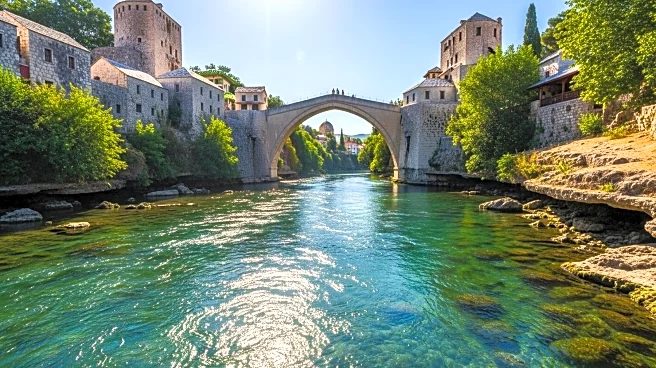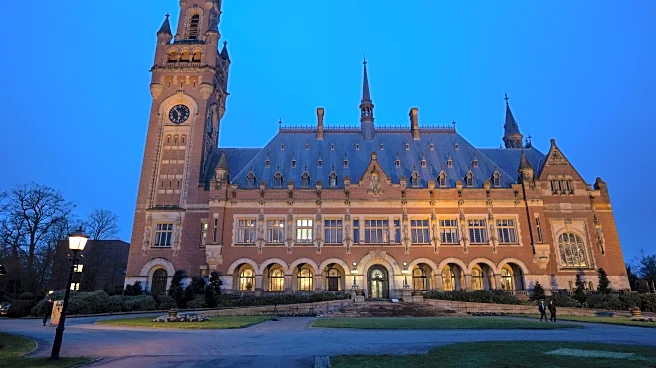What is the story about?
What's Happening?
Rome's mayor, Roberto Gualtieri, has announced plans to make the River Tiber swimmable within five years, inspired by Paris's recent reopening of the Seine for public bathing. A working group has been established to study the feasibility of the clean-up project. Despite the mayor's optimism, Italian media and experts have expressed skepticism, citing the river's current pollution levels and the historically lengthy timelines for public works in Italy. The Tiber, once a popular swimming spot until the 1960s, is now heavily polluted, with swimming strictly prohibited due to health risks. Recent studies have shown high levels of microplastics, ammonia, and faecal bacteria in the river, raising concerns about the feasibility of the project.
Why It's Important?
The initiative to clean the Tiber River is significant as it highlights the challenges of addressing environmental pollution in urban waterways. If successful, it could serve as a model for other cities facing similar issues, promoting public health and environmental sustainability. However, the skepticism surrounding the project underscores the difficulties in executing large-scale environmental clean-ups, particularly in regions with bureaucratic hurdles. The project also reflects broader efforts to reclaim urban natural spaces for public use, which can enhance quality of life and foster community engagement.
What's Next?
The next steps involve detailed feasibility studies and securing funding for the clean-up project. Stakeholders, including environmental groups and local government agencies, will likely play a crucial role in shaping the project's direction. Public opinion and media coverage will continue to influence the project's momentum, potentially affecting political support and resource allocation. The timeline and cost estimates will be critical factors in determining the project's viability.
Beyond the Headlines
The project raises ethical questions about the responsibility of urban areas to restore natural environments and the balance between development and conservation. It also highlights the cultural significance of the Tiber River to Rome's identity and the potential for revitalizing historical traditions through environmental restoration.
AI Generated Content
Do you find this article useful?















